Ranking 53rd among largest tech companies worldwide, VMware by Broadcom operates across 64 locations worldwide. So when it comes to creating content at scale, the leaders in multi-cloud workflow solutions have a good idea of how to optimize their content supply chain. And that’s by relying on an end-to-end Adobe solution to produce and deploy all their creative content.
In the “it takes one to know one” way, Adobe innately understands the demands of a massive content creation pipeline and has developed a suite of tools that allow customers like VMware to work faster and more efficiently across their entire workflow. With Workfront as the organizational backbone, Creative Cloud as the creative tool set, and Frame.io as the collaboration platform that unifies creatives and stakeholders with their assets—and with each other—the team at VMware knows exactly how innovative this cloud-based paradigm is and how essential it is to their success.
In this installment of Made in Frame, the VMware Brand Experience and Brand Engagement teams generously took us on a detailed exploration of the process behind creating all the assets for their annual VMware Explore conference, and shared their experience using Adobe (including Frame.io) solutions from ideation to camera capture to final delivery.
A massive journey
Every journey begins with a single step and VMware’s is no different. Based in Silicon Valley, with offices scattered across the globe, they know that when you have projects of the magnitude of VMware Explore, organization is a top priority.
To be clear, when we say conference, what we mean is a series of annual events that take place between August and November in Las Vegas, Singapore, São Paulo, Tokyo, and Barcelona, and are designed to introduce VMware’s international clientele to their latest products and services. The Las Vegas event alone attracted some 10,000 attendees, and between the various events the reach is more like 60,000.
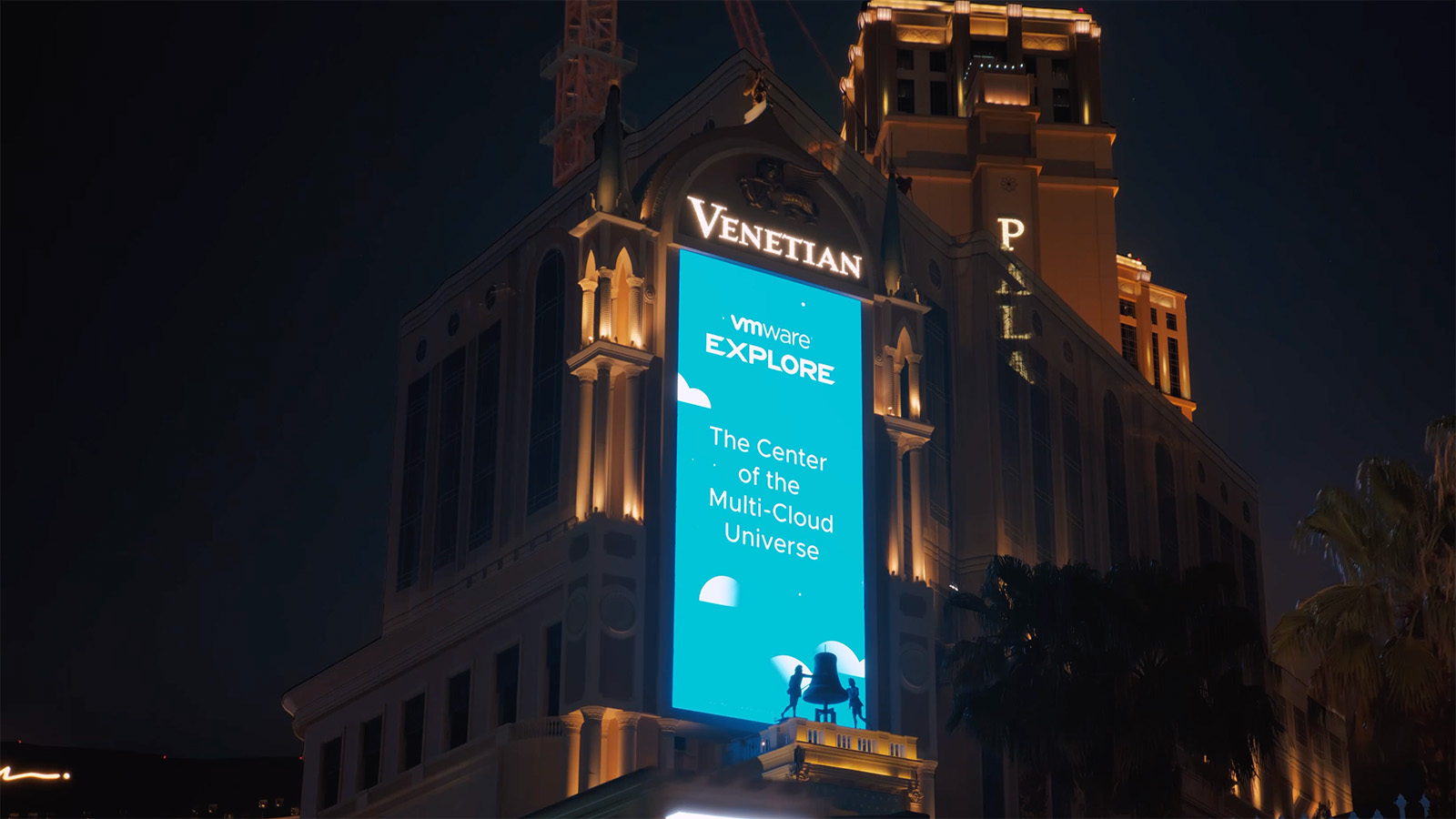
Jef Tyler is the Creative Director of the Brand Experience team, which functions as an in-house agency to their “clients,” the many internal teams that request their services. From concept through execution, the Brand Experience team produces a vast array of creative collateral.
How vast? According to Jef, “It’s everything from email templates and headers for the digital presence on the website for all the locations. We’ve got 3D files for some of the games we’re using. We’ve got infographics and multiple sizes of physical signs from lollipop signs to large directional ones. We’ve got digital signage and animations that go onto the website as well as those that go into hotel signage. We also often have signage for the airports that we travel to. And we do social posts, as well.” Those assets can originate from video or photographs, and incorporate design files that are created with Creative Cloud applications.
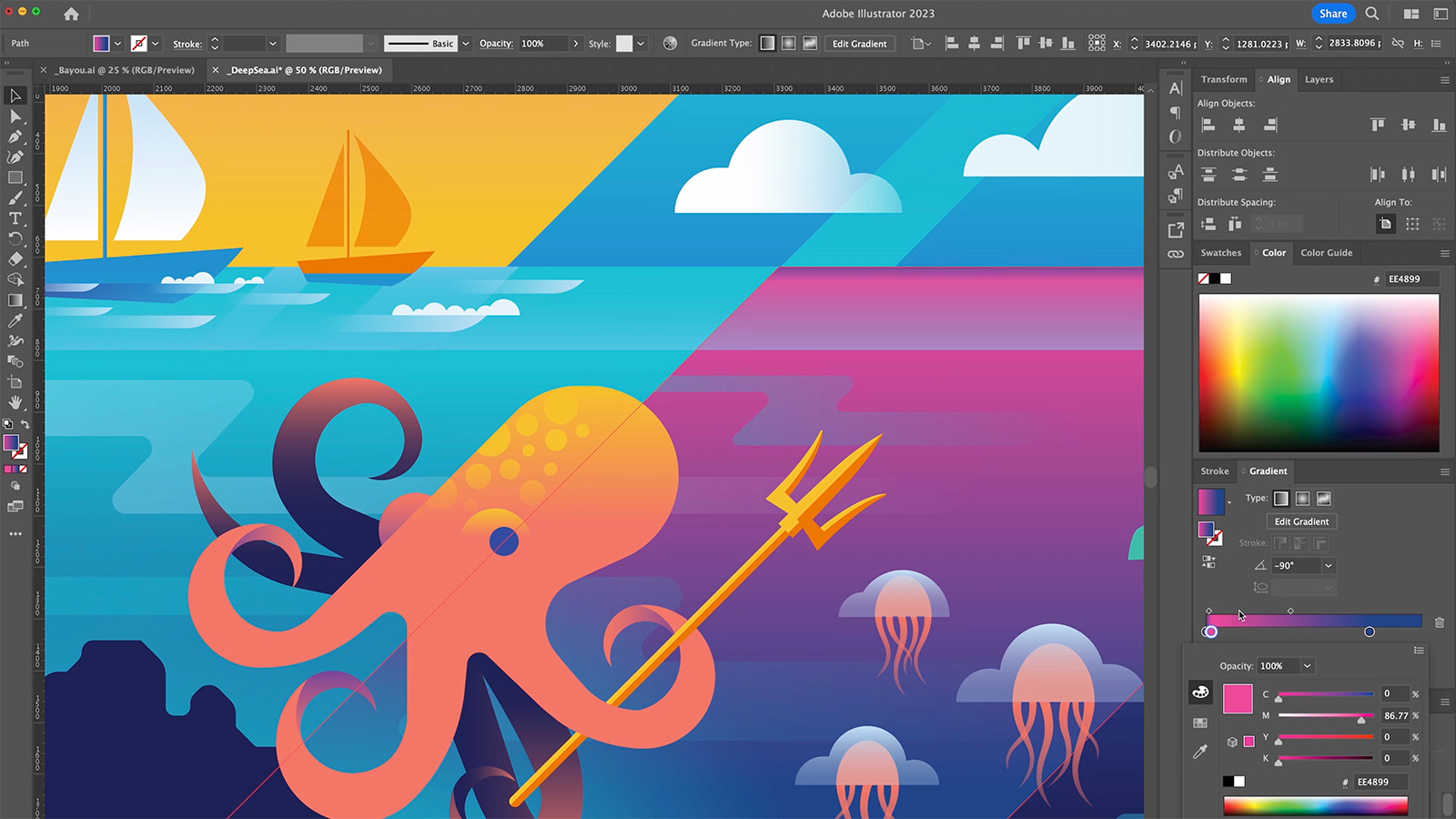
The Brand Experience creative services team is staffed by 92 people, with 24 creatives under Jef including designers, copywriters, and producers. And even then, the VMware team often outsources to third-party creative vendors to take on the overflow. But clearly having an in-house team—with a creative director to oversee what they produce—ensures that messaging stays on point and creative stays on brand across all collateral. Which makes sense, because no outside agency has the level of familiarity with the products that an internal one has.
Working in concert with Jef is Susan Walther, who leads Brand Engagement at VMware. Her team of ten’s primary focus is to make the internal clients’ experience as smooth as possible in terms of logistics. Managing all of the requests, programs, projects, and processes is their domain. When you consider that for VMware Explore in Las Vegas they created 970 individual assets, it’s a lot to track.
It starts with a roadmap
Workfront is where the journey really begins. Susan’s Brand Engagement team are the ones who generate the initial request in Workfront, which functions as both the kickoff of the project and the roadmap for what lies ahead.
The value of Workfront for a company like VMware can’t be overstated. If you consider that within VMware there are 2,000 clients who might request Brand collateral, and the Brand teams juggle as many as 400 projects at a given time, being able to have one centralized app that tracks all of the projects at every step is critical for everyone involved.
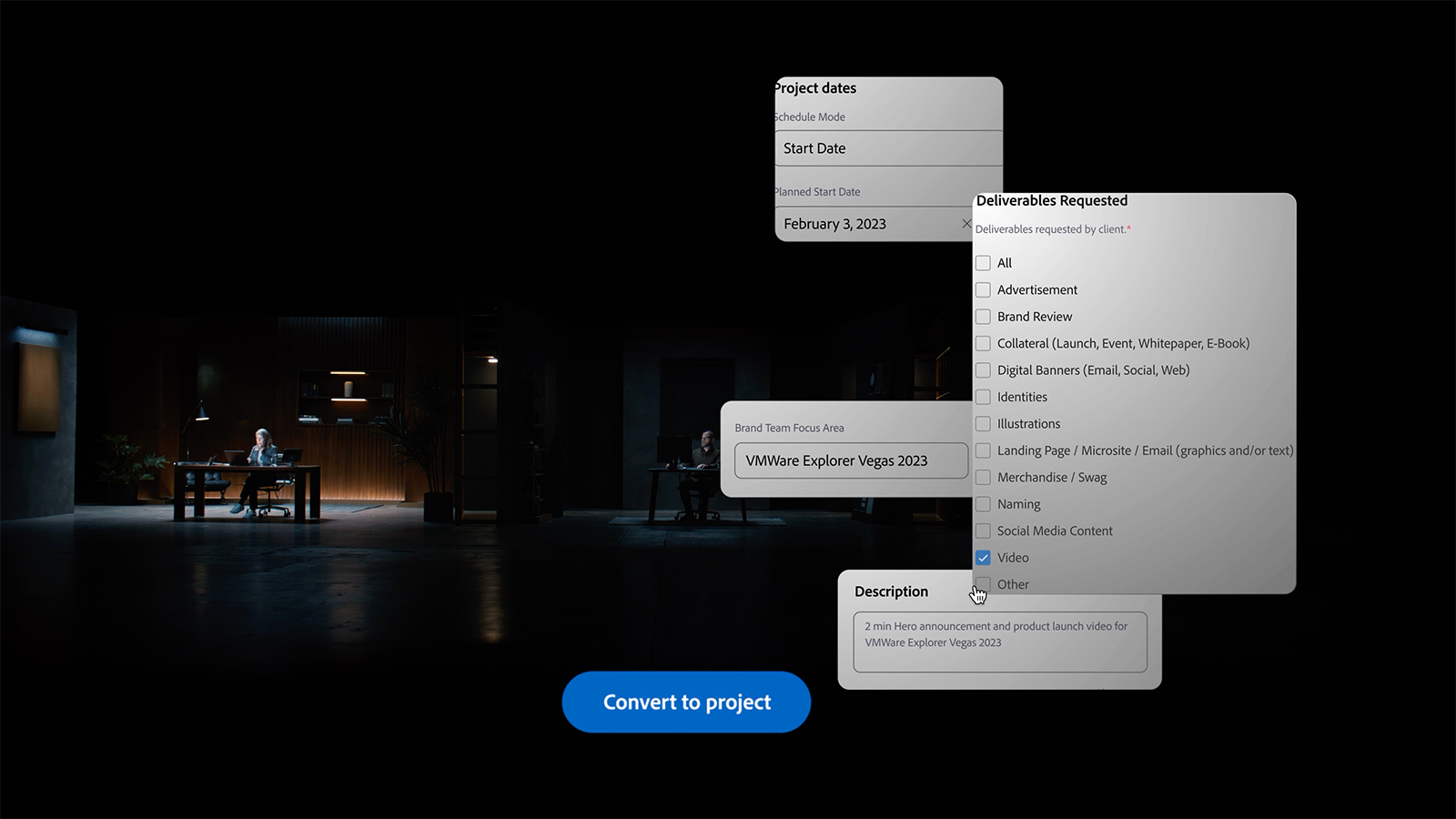
VMware exploits Workfront to its fullest. They’ve created a variety of customized templates that automate the process of initially entering a project into the system. The detailed templates prompt the user: are you creating a video? What’s the purpose or destination of the video? Do you need to do a studio interview? Will you go out on location? Is animation required? Are photographic assets required? How many deliverables will there be? In what formats?
By the time the client fills out the template, Susan’s group has a clear overview of what the request entails, as well as how much time it might take to execute it (based on a history of how long similar projects have typically taken). They can then assign internal resources (or external vendors) to the project, because Workfront gives them visibility into workloads on a team or individual basis. It also acts as a routing system, guiding them from point to point along the way.
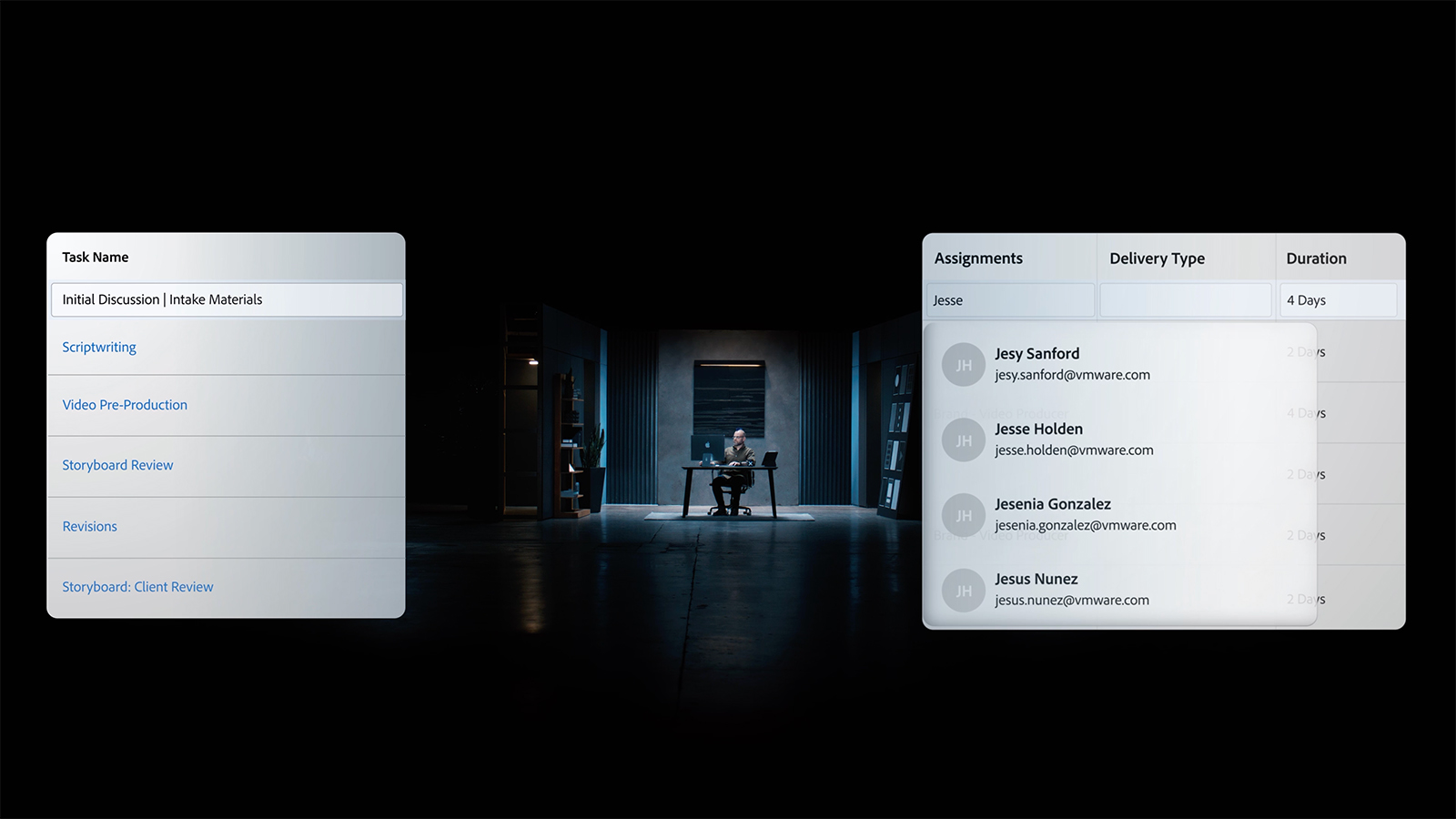
“There’s a column where each task is delineated in a particular order and when one is completed, a notification goes out to the person on the next task to start theirs,” Susan explains. “So, for example, the client and engagement manager do the intake and mark 100 percent finished on that once it’s complete, which then rolls right to the editorial team to do the messaging framework. Once that’s marked as 100 percent, it goes to the next person, the designer. Then there’s a task for the design review, and then you can have a client review. It’s great because the notifications go out and it’s automated so we can actually focus on other things.”

Workfront also helps to keep the creatives and the project managers aligned—because the request functions as the actual creative brief. If you ask either Susan or Jef how important it is to enter a request in Workfront before creative work ever begins both will answer, “We do not consider it a project until there’s a request.”
The creative intersection
But while Susan and her team live in Workfront, Jef and his creative team spend more of their time in Frame.io. The fact that the two play distinctly different, yet similarly vital, roles in the process is part of what makes Adobe’s Content Supply Chain solution so powerful.
Workfront excels at enterprise-scale work management, allowing marketing teams to easily customize workflows for their campaigns, including content creation and distribution. Assigning resources and being able to track progress across the entire project from that first request until final delivery of the last asset is where it shines.
The role of Frame.io is to enhance creative collaboration by simplifying the processes of sharing work-in-progress and managing assets, along with speeding reviews and approvals on all content that’s being created. “We’re focused on creating the look and feel of the event and executing that vision across all of the materials we generate,” Jef explains.
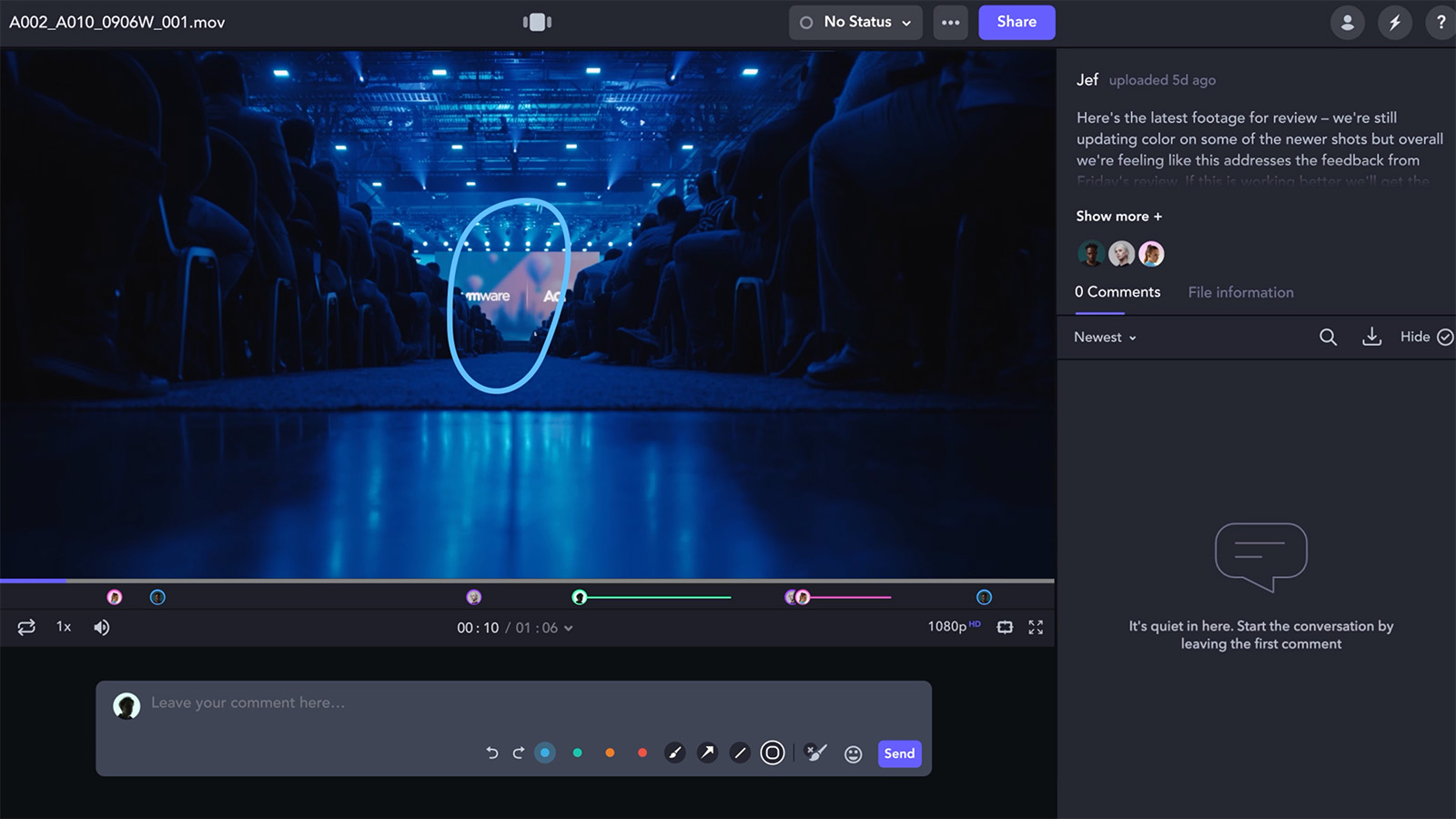
That includes enabling and supervising the work that’s also being handled by the outside vendors. “My job as the creative director is to ensure that everything looks the way it should and aligns to the event theme,” he says. Frame.io gives them the ability to exchange notes with great specificity on assets of all sorts, providing a creative destination for the team. From initial looks and treatments to finished animations, every asset is thoroughly reviewed in Frame.io.
When you’re dealing with the complications of having both a large in-house team across multiple locations as well as outside agencies, you absolutely need a place where all the voices and opinions that matter are heard—clearly and unambiguously—on all creative assets. According to Jef, beginning in January 2023 when the first Workfront request was initiated for VMware Explore, the team created 111 requests that resulted in 970 assets total, including 160 animations that were created in house and another 140 assets from outside vendors.
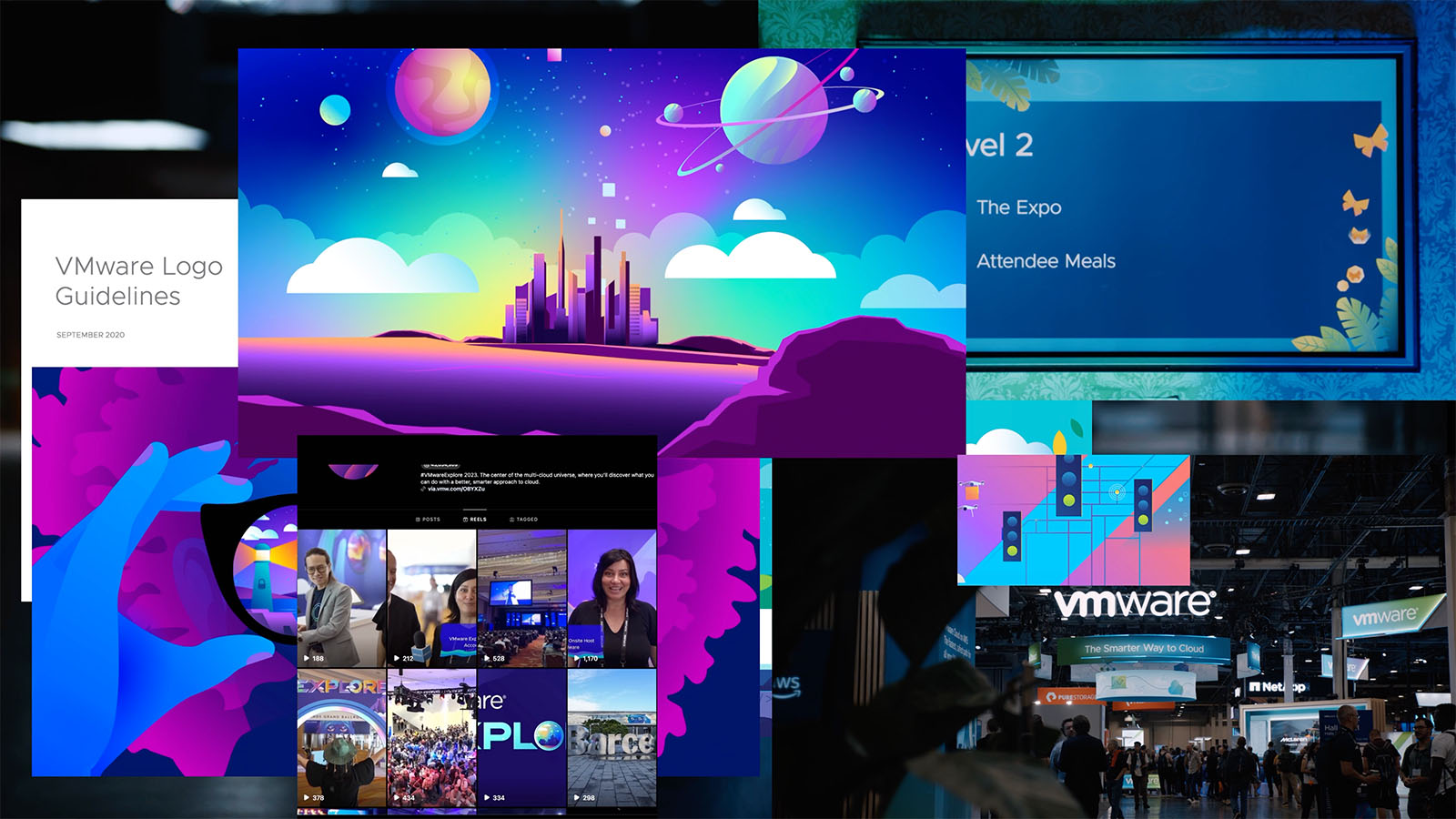
When footage is captured, it all goes into Frame.io, where it will be accessible to video producers, photo and video editors, and stakeholders throughout the creative process for review and approval rounds. Once something is marked as ready to review in Frame.io (or is marked as approved), that status also updates in Workfront. So while the creative process is taking place in Frame.io, including creative handoffs, peer review, and collaboration, project managers can easily keep track of the overall progress in Workfront.

With the latest Camera to Cloud integrations into Fujifilm photo cameras and the robust side-by-side comparison viewer, photographic assets can be easily reviewed in Frame.io—along with design files that are created in Illustrator or Photoshop, or motion graphics in After Effects.
An all-inclusive package
One of the advantages of Adobe’s Content Supply Chain is that there is often a direct route to and from each of the tools within the ecosystem. And the integrations continue to grow.
In fact, it’s the native integrations that first prompted VMware to use Frame.io with Creative Cloud. “The tie-in between how tightly Frame.io and Premiere Pro are integrated—the way the comments are linked to the timelines—is absolutely one of the first reasons we pulled it into our workflow,” Jef states. “It saves tons of time for our teams. Our editors love it because there are savings in terms of efficiency. We have one editor who takes everything into Frame.io and then all the editors—who are in five different locations—can work with proxies.”

While Jef uses Frame.io extensively as a review tool, there are numerous features he and his teams (as well as many of the other teams and clients within VMware) rely on. Namely, the ability to use Frame.io as a repository for frequently used assets, along with Enterprise features like multi-team management and presentation-sharing factor heavily into their overall setup.
“What we’re able to do with Frame that we’ve never been able to do before is that now we have a global source where we can keep our footage. Prior to the organization that we’ve achieved with Frame.io, we would have hard drives all around the planet,” Jef explains. “So somebody would say, ‘Hey, we need a video of this…’ and then they would go and shoot it. Now we can say, ‘Okay, does anybody have this content?’ It’s searchable by our tags so if you need something that talks about cross-cloud services, we can find it. ‘Here’s your link,’ and they have instant access to it. That’s huge for us.”
What we’re able to do with Frame that we’ve never been able to do before is that now we have a global source where we can keep our footage.
All of that is done with the benefit of full control, of course. Because there are so many different groups within VMware, they are able to assign different teams or projects within the main Frame.io account. “We all have our own little kingdoms and fiefdoms that we can reach from,” Jef says. “But we can also share back and forth as we need to, and allow vendors to put their media in and take it out.”

Key to that process are the security features of Frame.io. “We’re able to say that these are the materials that are okay for use if you’re a third-party vendor,” he adds. “And then they can access them from anywhere.”
As someone who likes to give his team freedom to work without being micromanaged, Jef appreciates how easy it is for him to review what he needs to. “As a creative director, I love the fact that there are all the pieces that are sent to me for Review, so I know that I’m supposed to see those and they’re ready for me. But I can also go into any of our folders and I can look at what the vendors are working on. Are they aligned to our brand standards? Are they aligned to the message? Or I can go and look through the stuff on my team. What are we working on? How are we doing?”
A hub in the cloud
From InDesign to Illustrator, Photoshop, Premiere Pro, Audition, and After Effects, VMware embraces the entire Creative Cloud. But as a company that understands the power of the cloud, they were eager to add the Camera to Cloud workflow to their creative process.

Jesse Holden, head of video for VMware’s Brand Experience team, primarily functions as the leader of the team responsible for bringing the designs to life through animations—again, with both internal and third-party vendors. The Frame.io integration with After Effects and Premiere Pro is something they rely on daily to produce all of their work.
“Video has a language of its own and you get a lot of client feedback that can be very vague and ambiguous at times,” he says. “Frame.io helps us be more direct. We can ask them for clarification on anything we need clarification on, and we can bring that right into the timeline, see those comments, and be more reactive to what they need.”

But in addition to that, he’s also the onsite editor at VMware Explore, and has discovered that incorporating Camera to Cloud into their workflow helps them work more directly with material they’re capturing for use throughout the conference. In much the same way that the Sundance Film Festival used Camera to Cloud to create same-day recaps, the VMware team created their daily recaps using the in-camera integration with the FUJIFILM X-H2S.
“It made a huge difference in allowing us to access footage in near-real time,” Jesse says. “We’re able to have the team at the conference shooting, and I’m able to start reviewing it and creating select reels and then feeding that out to different teams that want to get clips out on social media almost immediately.
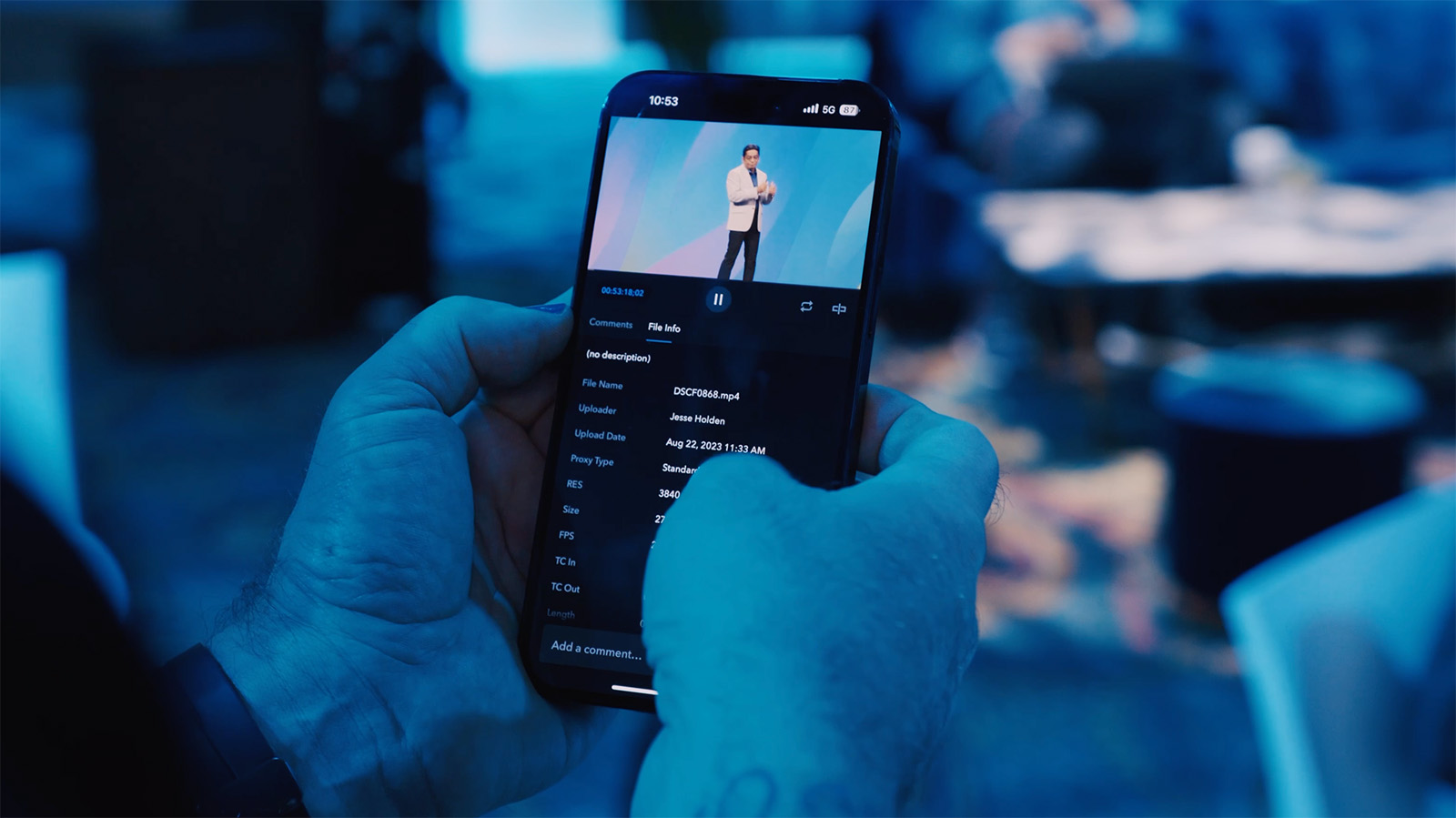
“Prior to Camera to Cloud, the process was a convoluted handoff of many, many hard drives. They would come in with their camera cards, and I would have a notebook where I made notes on what they were just shooting. We’d feed those cards in and I’d have to copy those off to at least three hard drives so they could clear those cards and then get back in the field and re-use them,” he explains. “It was complicated and burdensome and always made things very hectic.”
How big a difference did it make? “This year, because of the Camera to Cloud workflow, we were able to deliver videos almost a day faster. In the past, the recaps would come out the next day, and this year we were able to get them out in the same evening.”
According to Jef, Jesse was even able to work with the proxies coming directly from camera. “The proxies were high-quality enough that we didn’t need the 4K files for our deliverables,” he says. “The efficiency from end to end, from the light load the shooters are carrying all the way to the insanely good quality we’re putting out at the end, while saving all the time in between, was an absolute game changer for us.”
By instantly getting them access to footage we’re literally giving people additional days to be creative.
To put a finer point on it, Jef says, “When you have to ship footage or there’s the amount of time it takes to download gigabytes and gigabytes of footage, that’s all time that the video producer can’t spend creatively doing their job. By instantly getting them access to footage we’re literally giving people additional days to be creative.”
Beyond “just” Camera to Cloud, there are other game-changing ways that the Adobe-Frame.io ecosystem enables these teams. Among them are their photography and Creative Cloud libraries.
Because they need to create and share libraries of photo assets, Frame.io gives them a place in which they can do both. “As our photographer shoots, raw photos go directly up to Frame. I can comment on them: ‘We’re going to run the post on these. Let’s get these cleaned up,’ Jef says. “We’re looking at taking thousands of pictures, culling that down to say, 600 or 800 pictures. Then I’ll go in and cull that down to 500. My retoucher can take those, he can make the changes, and those are ultimately what will make it into the photo library. Being able to have all of that information really quickly available makes it very easy to scan through, markup, and notate. We upload those into a finished file and that can then be made available to everybody, including our vendors.”
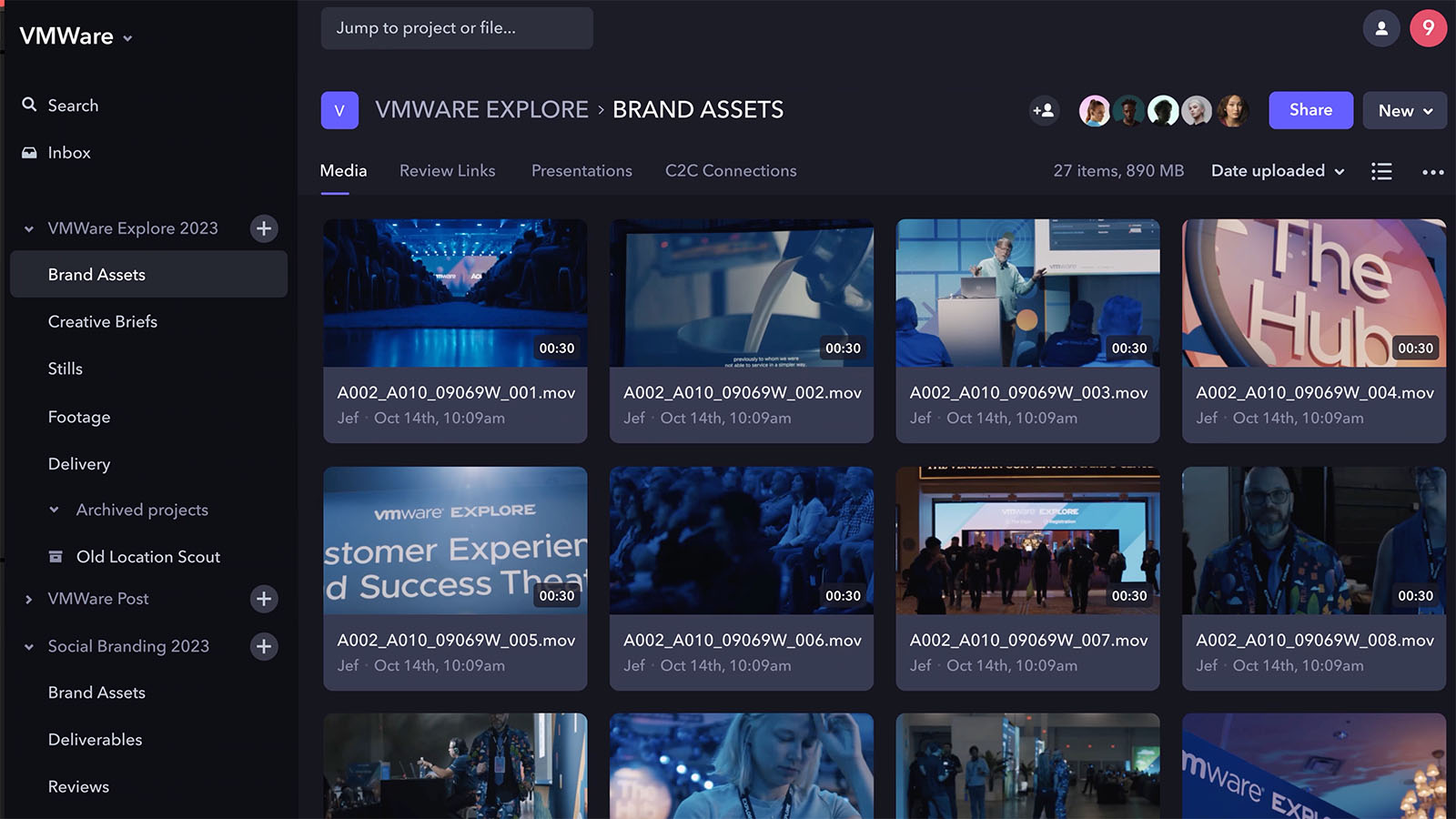
Jef also relies on sharing libraries that include other kinds of assets. “Creative Cloud libraries are a wonderful tool across Adobe applications,” he says. “They’re worth their weight in gold. We can share our brand assets: our logo, color palettes, visual motifs, and our video tools that are built out of MOGRTs, like lower thirds and bumpers. The best thing is that if you make an update to an asset in the Creative Cloud library, anyone who’s using it automatically gets the update.”
Clear visibility
Obviously, fewer steps and stops add up to more savings in terms of time and cost. But being able to accurately quantify how much you’re saving is another advantage of the Adobe workflow.
From Jef’s viewpoint, the tight integration between all the tools helps make their workflow more seamless and streamlined. “The fact that I can be working in Premiere and open the Frame.io panel means that I don’t need to actually open that application. My designers can work in Illustrator or Photoshop and connect directly to Workfront from those applications using the panel. They can get all their notifications or move their proofs,” he says. “That’s a huge time savings for everything. The fewer windows you have to juggle and get through, the fewer distractions you have, the more you can focus on your creative work. And that’s what’s most important to us. Everything’s in one place. We can all look at it. It gives us everything we need.”
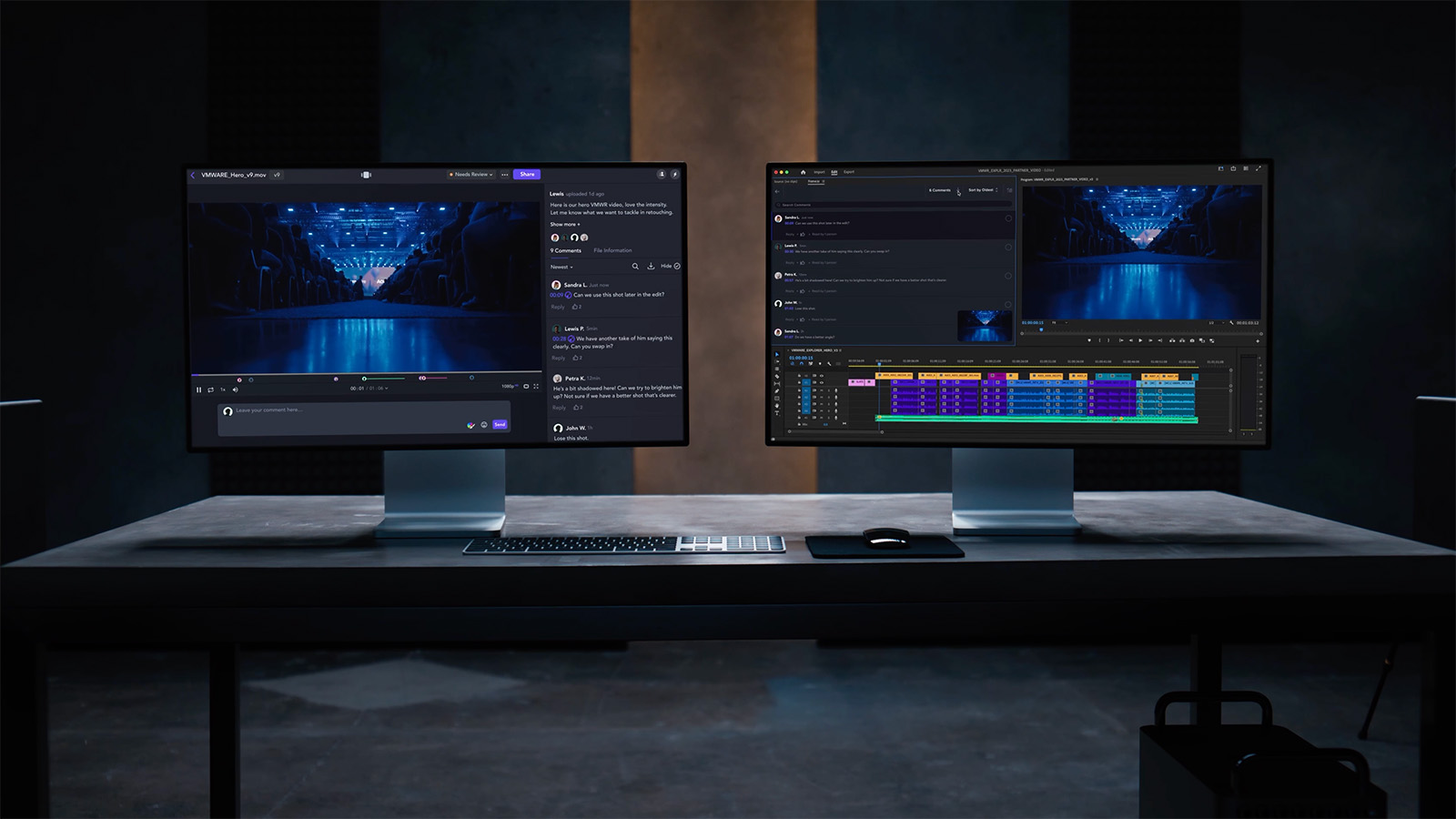
Speaking of Workfront, what it particularly gives the teams is a clear view of time and resources used for each project which not only helps the teams build a workflow history, it enables them to better predict what it will take to do similar tasks in the future. “One of the benefits is that it’s archival, so I can open all the Workfront requests from our past shows and see how we did it last time—where did we have issues? How did we address those issues? It’s a nicely built one-stop shop for all the information you want for any kind of creative project,” Jef says.
So what are some of the key takeaways? Jef calculates that by introducing Frame.io into the workflow and eliminating email notes, they’re reducing review and revision cycles by approximately 20 percent. Frame.io also helps them to repurpose existing assets from the first Explore event in Las Vegas through the other four events over the course of the months, yielding an economy of scale.
By introducing Frame.io into the workflow and eliminating email notes, we’re reducing review and revision cycles by approximately 20 percent.
Susan’s insights likewise combine the hard stats and the effect they have on her, and her team’s, overall quality of work. “I’m not left as being the traffic cop for the entire team. The people I work with are really good at what they do. Workfront takes out the whole micromanagement element because everything is set up and customized to the individuals and the projects,” she says.

“As far as time savings, about 60 percent of our time has been freed up as a result of using all these Adobe tools,” she continues. “As a result of having that extra time, my team can focus on the bigger picture—on the brand strategy, on the programs, on the process. Before, we didn’t have adequate time to do that because we were mired in all the tactical and time-consuming tasks that weren’t what my team should really be focused on.”
The choice to adopt Workfront was based on a few key factors, Susan says. “We had a lot of other tools to compare it to, but it was by far the best because it was highly customizable. It could do things like reporting and routing things to specific people. The reporting is great when we need to know how many of a specific asset we’ve produced in a quarter, or a year, or whatever span we need to know about, and gives us visibility into what we need to focus on.”
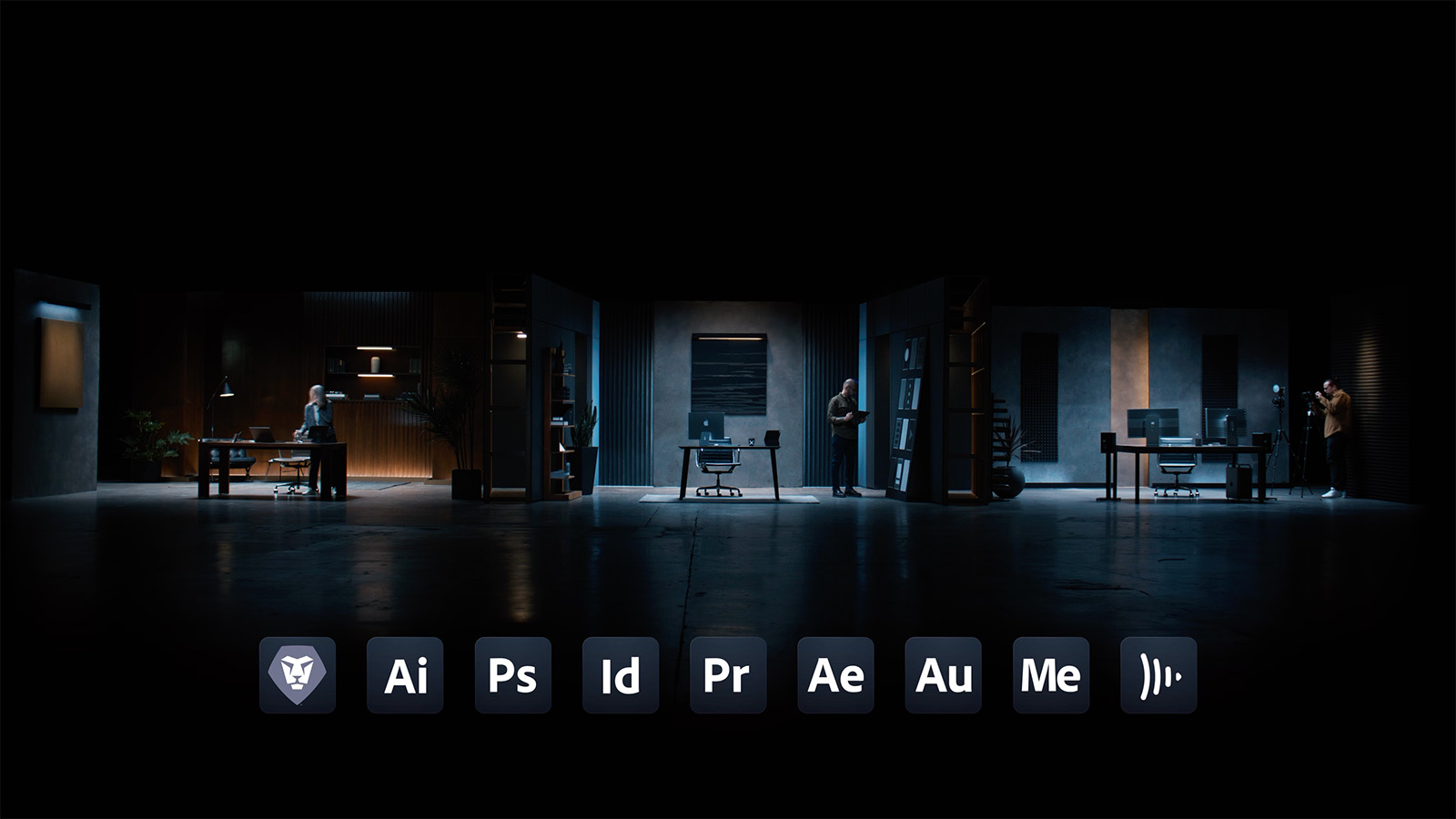
Her bottom line? “By using Adobe products, we’re saving hundreds of dollars per person per quarter, and tens thousands of dollars per year.”
Jef’s is even more succinct. “We can’t do our jobs without Adobe.”
A memorable experience
The most successful journey is one that leaves you with great memories afterwards. In the case of VMware Explore, this journey was very, very successful.
Especially at a time when virtual conferences have become more commonplace, creating an in-person event that people are excited to attend is a big creative challenge. “We want to make the event immersive, make it an experience where people can let themselves go and feel like they’re a part of it,” Jef says. “We put a lot of little Easter eggs throughout the event that our audience can pick up on so as you’re going around, there’s always something new to look at.”
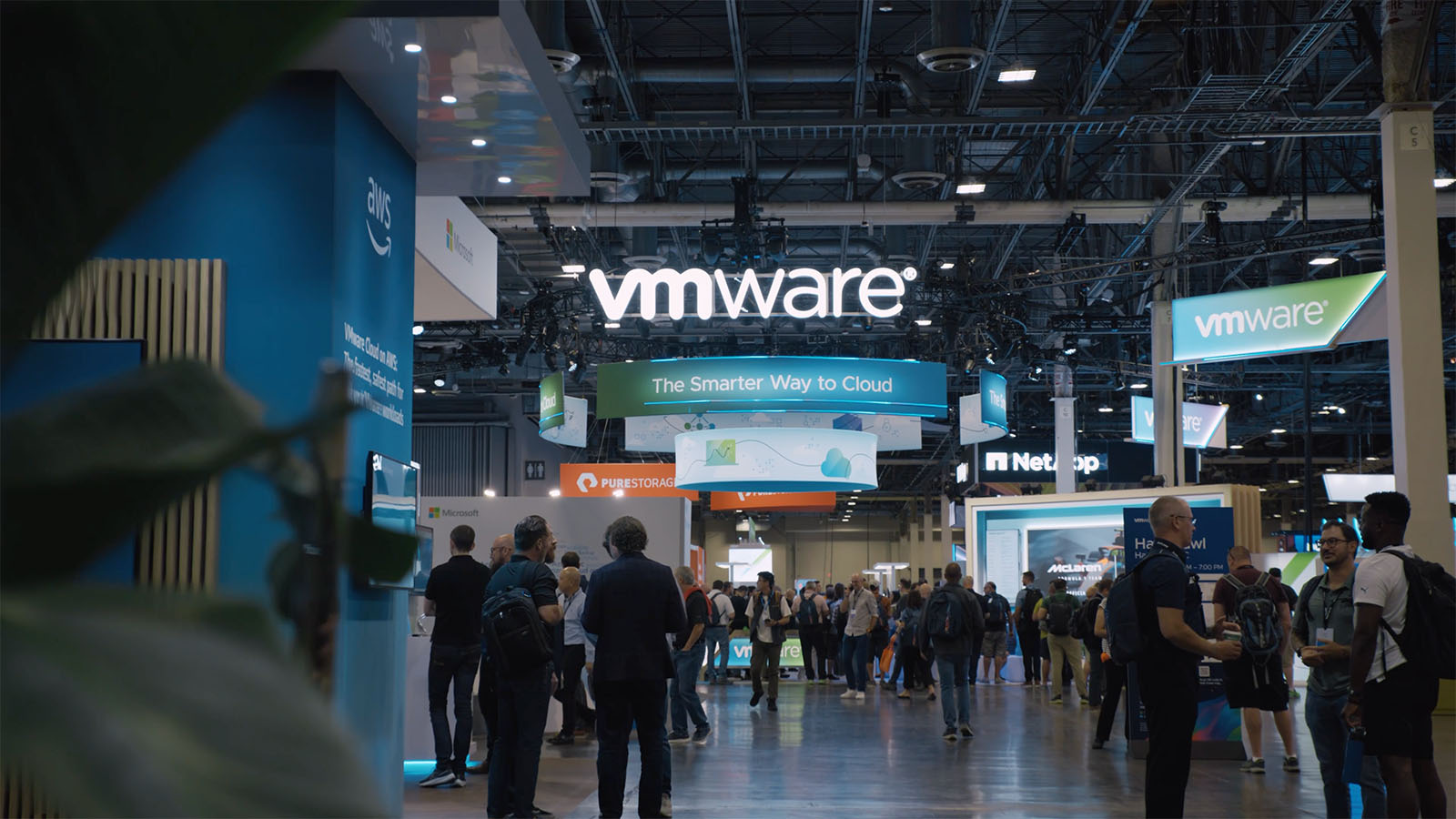
“You’re trying to get somebody off the couch to attend, so if you can make the event something that’s enjoyable as well as enriching from the professional and educational perspective, then they’re going to come back next year. And the people they tell about the good time they had will want to attend the next time.”
And then there’s just the satisfaction of being at the conference and seeing the culmination of months of work. “Once you finally step into the conference and experience the grandeur of how much you’ve pulled off—and how it all comes together—it’s a great feeling,” Jef adds. “It was a fantastic event for us this year.”
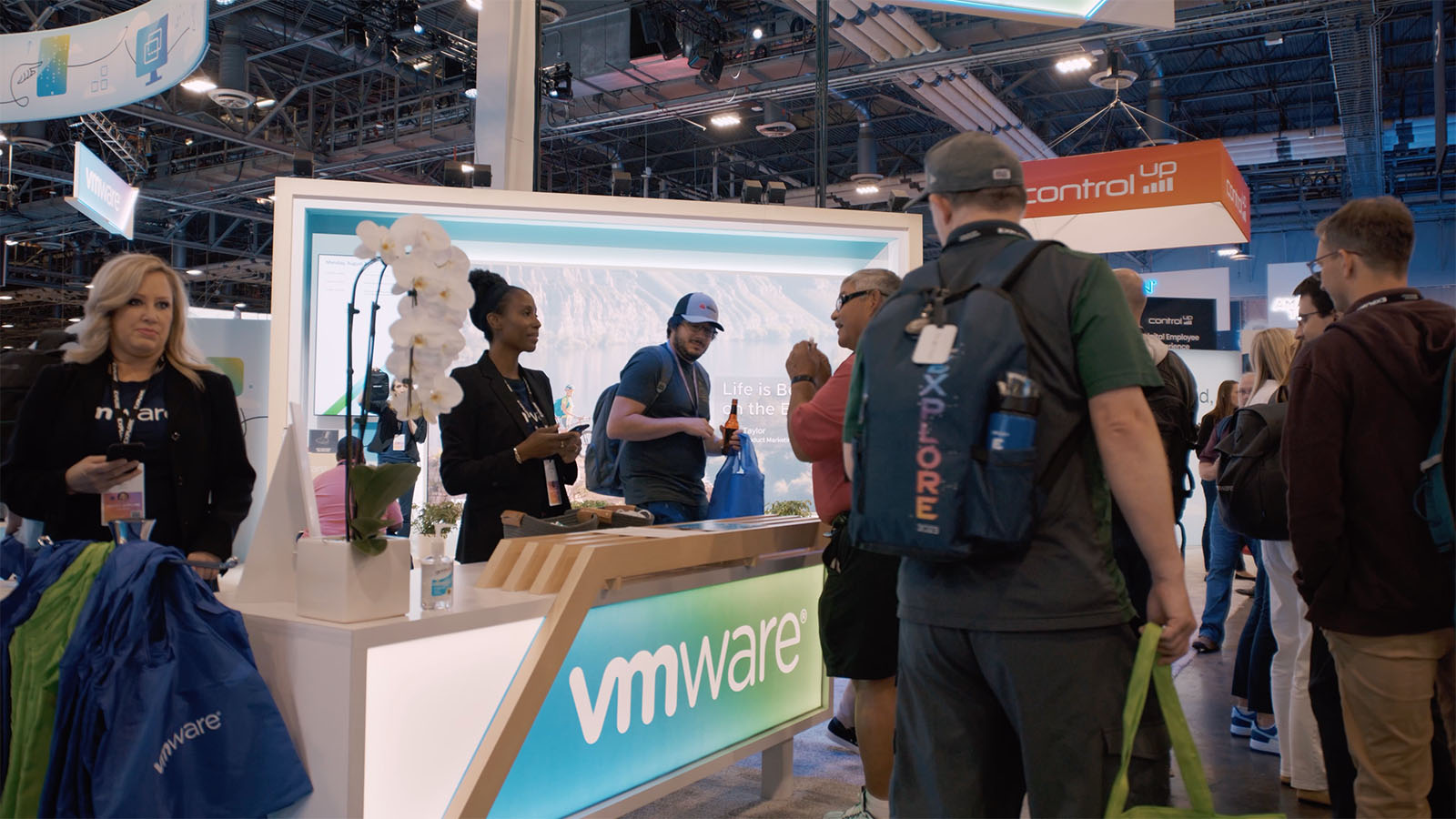
Managing the identity of a $20 billion brand effectively, on a global scale, while managing the people who bring that identity to life is one of Jef’s big challenges. But having tools that enable his creatives to work more efficiently and effectively makes his job more satisfying and gratifying. It’s another reason why VMware is so dedicated to the end-to-end Adobe workflow. “If you’re trying to run a global brand and you’re trying to do it with a lot of different tools, you’re doing a lot of extra work,” he says.
At the end of a journey, you might also remember the bumps along the road—and if you’re planning on returning to that destination, you want to find ways to avoid them. As a manager of a large team, what’s maybe most important to Jef is making the trip as smooth as possible. “Having the tools that allow people to work more comfortably allows them to have a better work-life balance,” Jef states. “And it allows them to be more creative and get great results.”
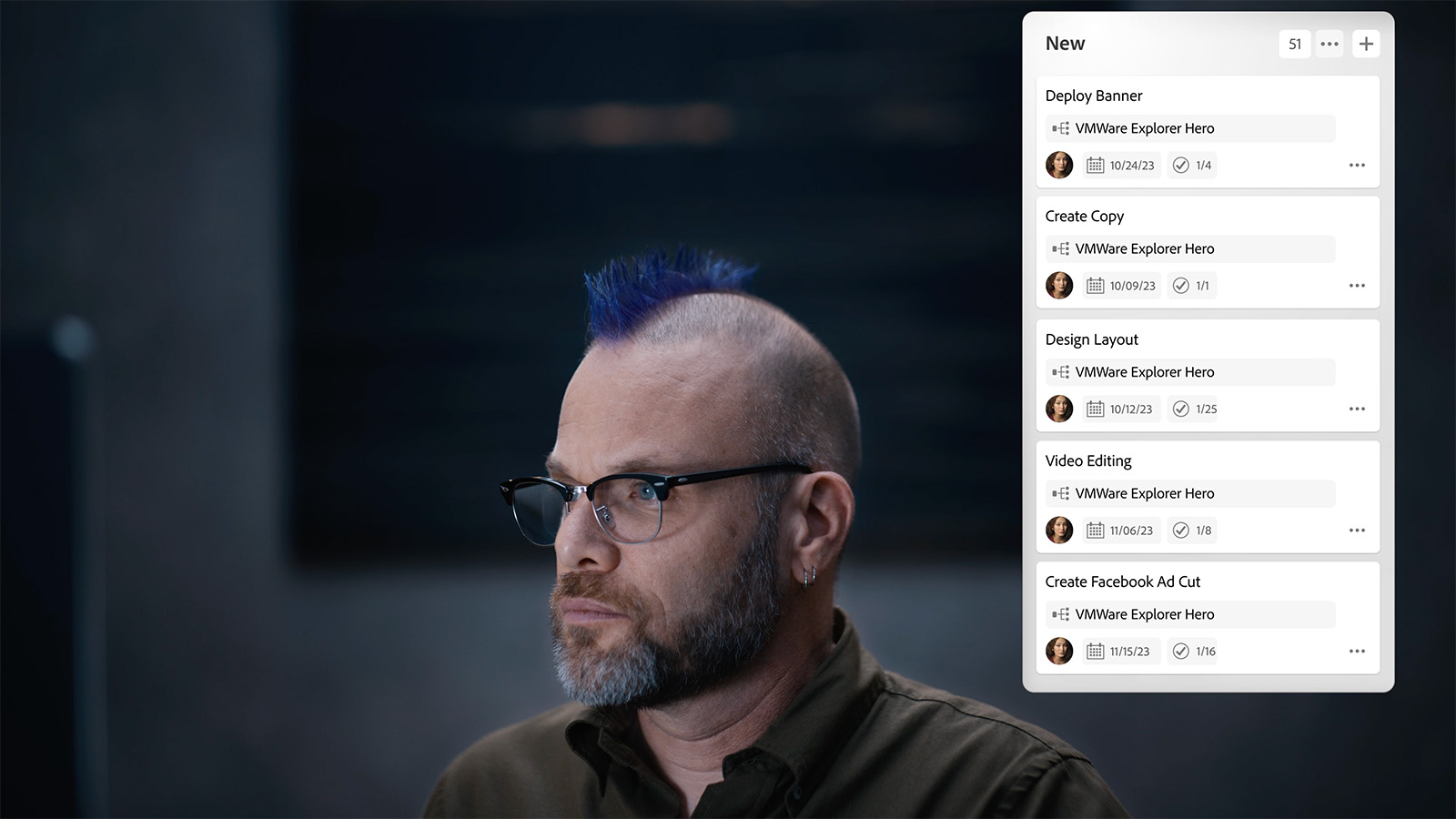
As the providers of the tools that enable a brand like VMware to achieve such a successful outcome—creatively, professionally, and financially—getting to ride along with them feels just as satisfying.
We can’t wait to see where the road leads them as the tools continue to develop in the years to come.
Note: All stats are accurate as of September 2023.




